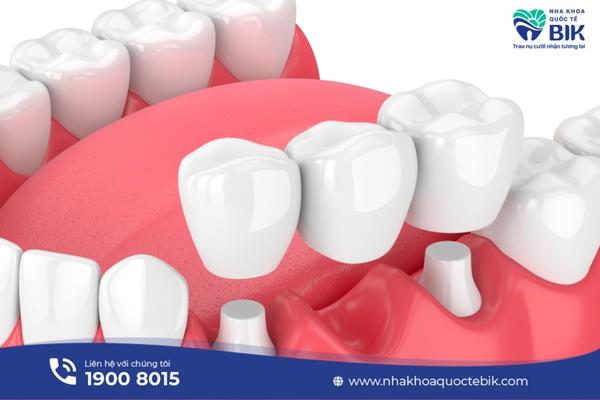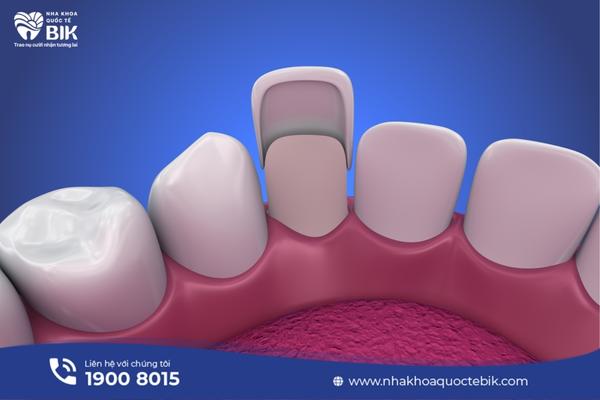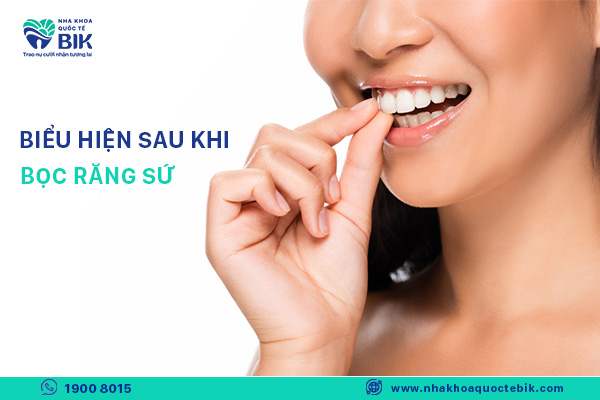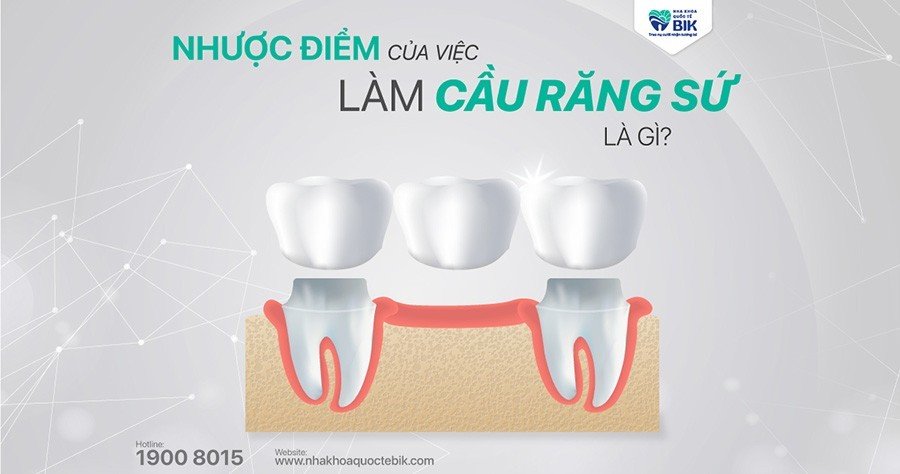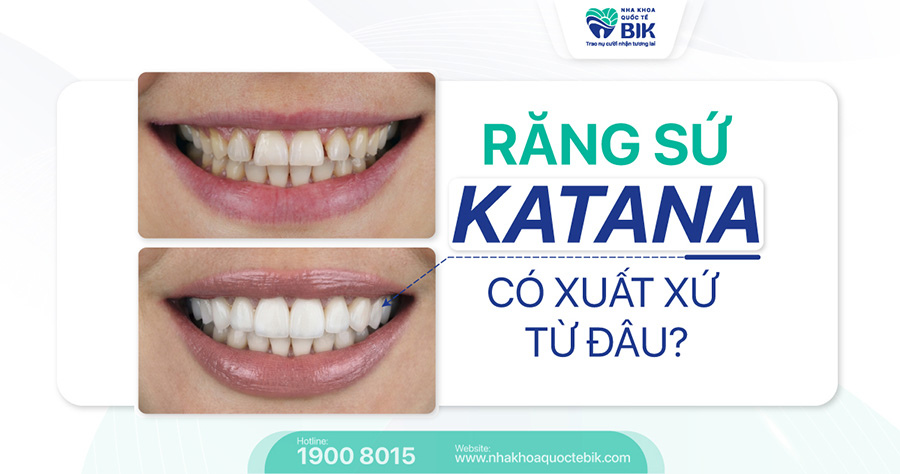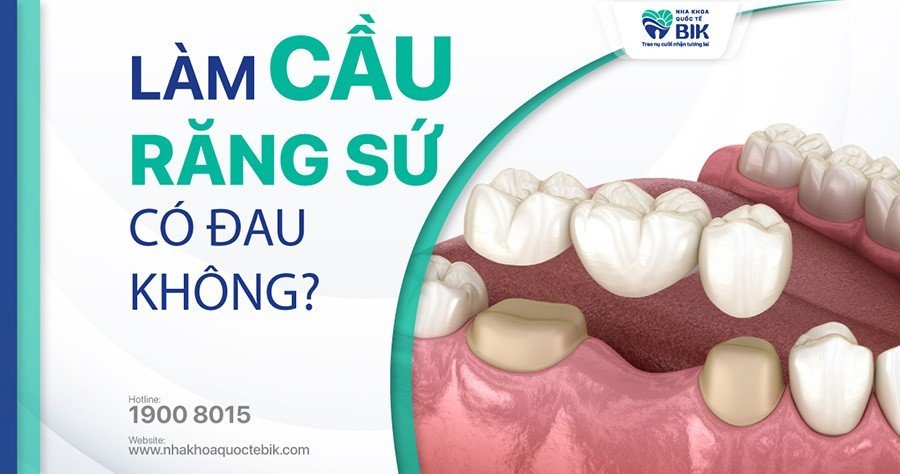
The process of making porcelain bridges often involves grinding the tooth stump, so whether making porcelain bridges hurts or not is a matter of concern for many people. Accordingly, throughout the process of grinding teeth to make porcelain bridges, customers will not feel any pain thanks to local anesthetics. However, the pain will start to appear after the anesthetic wears off for about 1 – 2 days and gradually subside.
1. Should I get a porcelain bridge?
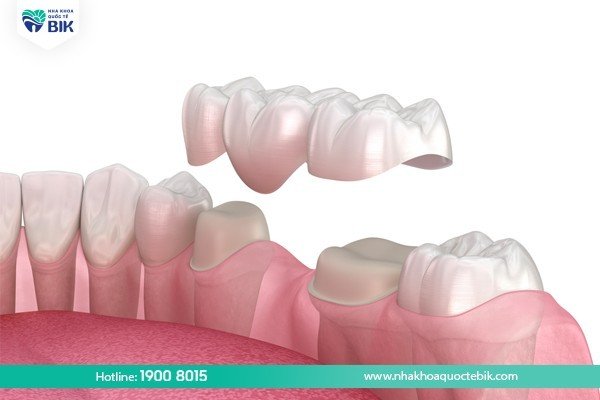
Does getting a porcelain bridge hurt? Should I do it?
In fact, whether to do a porcelain bridge or not depends on each person’s specific condition. Therefore, when losing teeth, customers need to have a thorough general examination as well as take X-rays and CT scans. Only with the detailed results can the doctor come up with an appropriate treatment plan.
For porcelain bridges, the two teeth adjacent to the lost tooth need to be ground down to support the porcelain bridge, so the doctor will have very high requirements for the strength of these two teeth. In addition, that is why porcelain bridges are only suitable for cases where one or several teeth are missing. In general, porcelain bridges are still the most optimal restoration method today, with a reasonable cost and customers can still restore both aesthetics and chewing ability.
->> See more: Are porcelain bridges as durable as real teeth?
2. Does making porcelain bridges hurt?
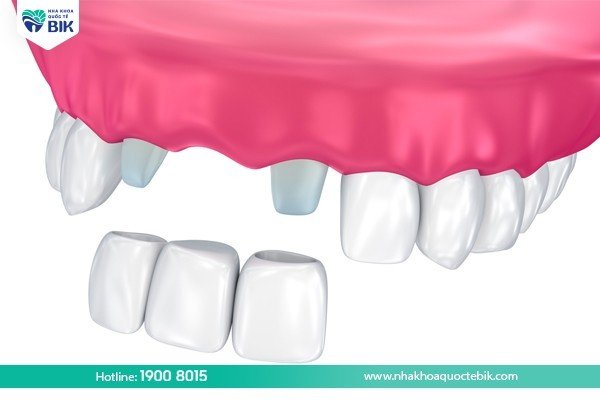
Does it hurt to make a porcelain bridge?
In the process of making a porcelain bridge, the doctor needs to grind the real tooth stump, so many people wonder if making a porcelain bridge hurts. The fact that the real tooth is more or less affected will make the customer feel a little uncomfortable and the amount of pain depends on many different factors such as the doctor’s skills, each person’s constitution, etc.
2.1. While making a porcelain bridge
The first condition when wanting to make a porcelain bridge is that the 2 adjacent teeth must be really strong so that the doctor can grind the tooth stump to support the porcelain bridge. Before starting to grind the tooth stump, the doctor will perform local anesthesia to help the customer feel more comfortable and secure during the treatment process. Thanks to that, the pain seems to completely disappear during this time.
2.2. After the porcelain bridge has been placed
Because the real tooth is affected, after the porcelain bridge is completed and the anesthetic gradually wears off, the customer may feel a little sore. Normally, the pain will start after about 1 – 2 hours. This is a very normal condition, so the customer does not need to feel too worried.
However, this pain is completely within the tolerable range. However, real teeth after being ground down are still very sensitive in the beginning, so customers still need to pay attention to some issues regarding diet and oral hygiene to avoid the pain lasting longer.
3. Why does it hurt when making a porcelain bridge?
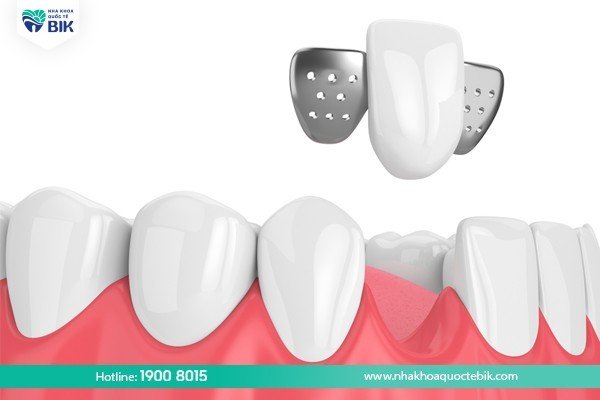
Why does it hurt when making a porcelain bridge?
Usually, the pain when making a porcelain bridge will appear in the first 1 – 2 days and will gradually decrease after 3 – 5 days. If the pain does not go away after the above time, the customer should immediately go to a reputable dental facility for timely examination and consultation because this condition may be due to the following reasons:
Due to a high bite
After making a porcelain bridge, if the customer experiences prolonged pain, it may be due to a problem with the bite. In cases where the size or height of the porcelain teeth is not manufactured exactly according to the standard size of the jaw, during the chewing process, it is very likely to put pressure on the jaw bone, leading to pain.
Due to oral diseases
The prolonged pain after porcelain crowns may be due to oral diseases such as tooth decay or pulpitis that were not thoroughly treated by the doctor before restoration. At this time, customers should go to the dentist to remove the porcelain crown, completely treat oral diseases and then reinstall it.
Due to teeth grinding
Many people have the habit of grinding their teeth while sleeping and this puts a lot of pressure on the dental bridge, thereby affecting the real teeth that are ground down below, causing prolonged pain. If there is no remedy for this condition, it can lead to broken porcelain bridges or jawbone inflammation.
Due to poor dentist skills
Whether or not making a porcelain bridge is painful depends on the dentist’s qualifications, experience and tooth grinding operations. Because each person’s tooth structure is different, if performed by an inexperienced dentist, it is easy to make mistakes, the grinding force is too great, causing too much enamel to be removed, damaging the structure and pulp of the tooth.
4. Is a porcelain bridge durable?
Porcelain bridges have the same hardness, chewing ability as real teeth and have an average durability of about 7 – 10 years. However, this time can be extended or shortened depending on each person’s oral hygiene and diet.
Therefore, porcelain bridges are actually only a temporary method that customers can use when losing teeth because they cannot prevent bone loss and gum recession.
5. Dental care to limit pain
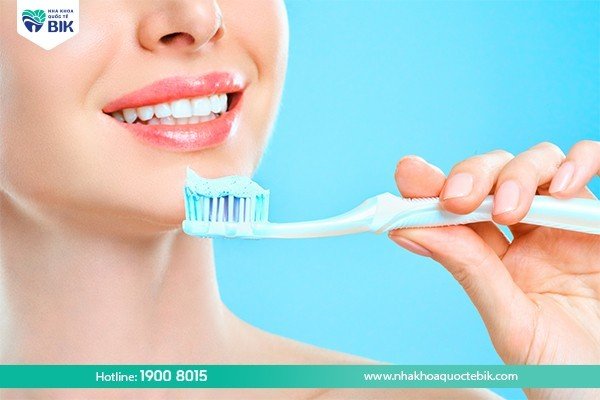
Does getting a dental bridge hurt? It depends on post-treatment care
To limit pain after getting a porcelain dental bridge, customers should note the following:
Proper oral hygiene
– Brush your teeth at least twice a day with a soft-bristled toothbrush, using just enough force to avoid damaging the porcelain teeth and the real tooth stump inside.
– Use toothpaste containing fluoride to help strengthen teeth.
– Use dental floss to completely remove food debris between teeth, preventing bacteria from accumulating and attacking, causing pain.
Reasonable diet
– Avoid eating foods that are too hard or too chewy, requiring a lot of force in the early stages after getting a porcelain bridge, to avoid tooth stumps must withstand great pressure.
– Limit eating foods with temperatures that are too high or too low to avoid affecting the real tooth stump, especially if the customer uses metal ceramic crowns with high heat conduction.
– Stay away from cigarettes because Nicotine not only causes discoloration of porcelain teeth but is also the cause of many other oral diseases.
6. BIK International Dental Clinic – A reputable address for making porcelain bridges
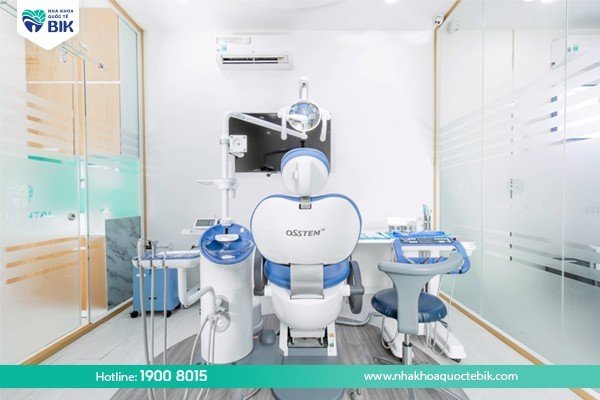
Whether making porcelain bridges hurts or not depends on the dental clinic the customer chooses
BIK International Dental Clinic confidently accompanies many customers both domestically and internationally on the journey to restore damaged teeth lost with the porcelain bridge method, ensuring minimal pain and the best results.
Painless thanks to a team of good doctors
The team of doctors working at BIK International Dental Clinic have all been trained from basic to advanced in the field of maxillofacial surgery in general and cosmetic dental restoration in particular. In addition, with more than 10 years of experience in the profession, the doctors can ensure precise and meticulous operations that do not affect the tooth pulp during the process of grinding teeth to make porcelain bridges. This can help customers feel more comfortable and secure throughout the process of making porcelain bridges.
Painless thanks to the support of modern machinery
All facilities of BIK International Dental Clinic are fully equipped with modern equipment, machinery and technology to support doctors from examination to treatment. Ensuring the process is quick, safe and minimizes pain for customers.
Painless thanks to genuine materials used
The materials used to make porcelain bridges at BIK International Dental Clinic are all genuine imports from abroad, with clear labels and warranty policies. Therefore, customers can rest assured that there will be no deterioration of materials, poor quality causing oral diseases or pain when using porcelain bridges for a period of time.
So whether making porcelain bridges is painful or not depends largely on the doctor’s skills as well as each person’s constitution. To minimize the pain when making porcelain bridges, customers should choose to do it at a reputable dental facility, with a team of highly skilled doctors with many years of experience in the profession

